Generating regular expression from Finite Automata
There are two methods to convert FA to regular expression –
1. State Elimination Method –
- Step 1 –
If the start state is an accepting state or has transitions in, add a new non-accepting start state and add an €-transition between the new start state and the former start state. - Step 2 –
If there is more than one accepting state or if the single accepting state has transitions out, add a new accepting state, make all other states non-accepting, and add an €-transition from each former accepting state to the new accepting state. - Step 3 –
For each non-start non-accepting state in turn, eliminate the state and update transitions accordingly.
Example :-

Solution :-
Step 1
Step 2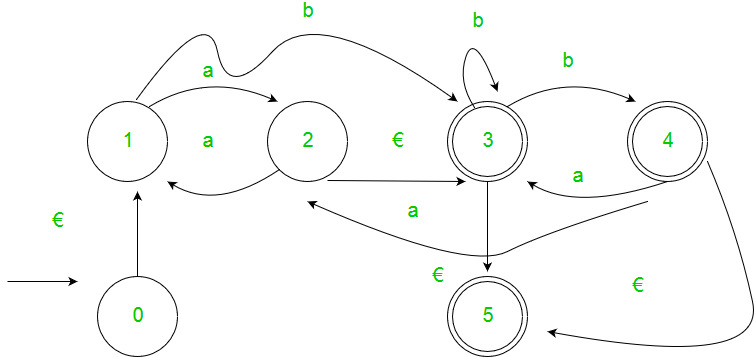
Step 3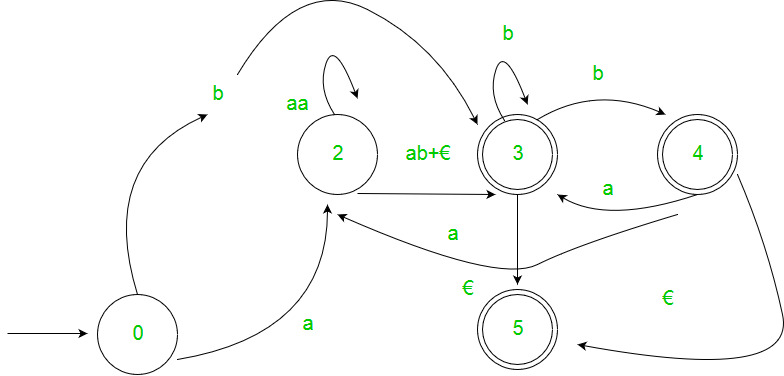
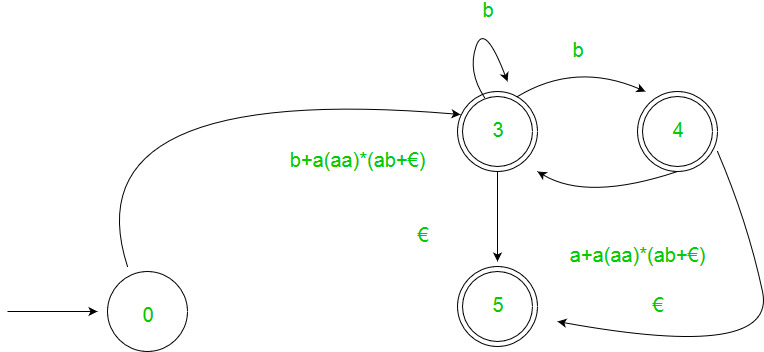
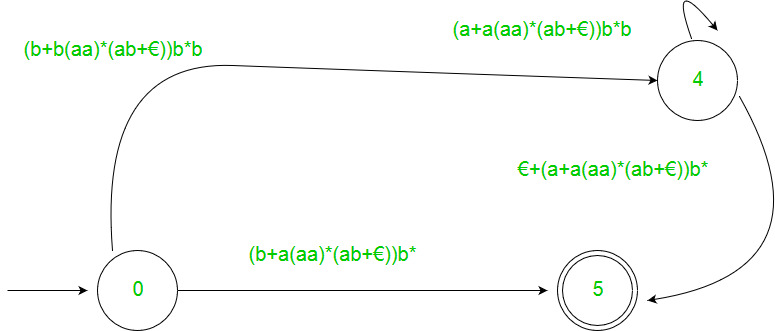
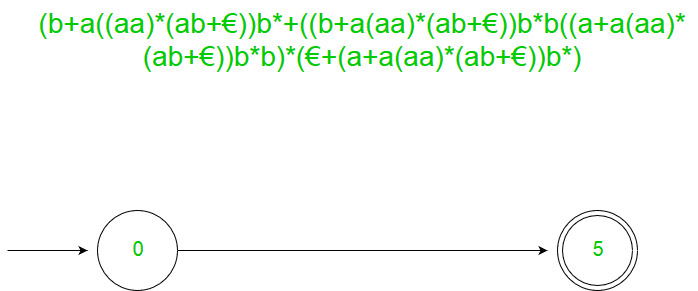
2. Arden’s Theorem – Let P and Q be 2 regular expressions. If P does not contain null string, then following equation in R, viz R = Q + RP, Has a unique solution by R = QP*
Assumptions –
- The transition diagram should not have €-moves.
- It must have only one initial state.
Using Arden’s Theorem to find Regular Expression of Deterministic Finite automata –
- For getting the regular expression for the automata we first create equations of the given form for all the states
q1 = q1w11 +q2w21 +…+qnwn1 +€ (q1 is the initial state)
q2 = q1w12 +q2w22 +…+qnwn2
.
.
.
qn = q1w1n +q2w2n +…+qnwnn
wij is the regular expression representing the set of labels of edges from qi to qjNote – For parallel edges there will be that many expressions for that state in the expression.
- Then we solve these equations to get the equation for qi in terms of wij and that expression is the required solution, where qi is a final state.
Example :-
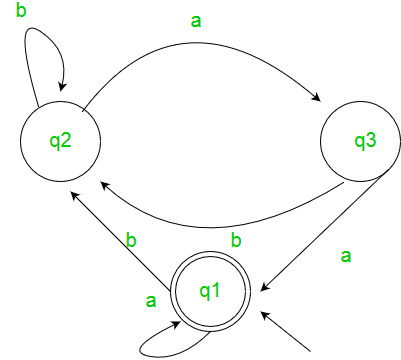
Solution :-
Here the initial state is q2 and the final state is q1.
The equations for the three states q1, q2, and q3 are as follows ?
q1 = q1a + q3a + € ( € move is because q1 is the initial state)
q2 = q1b + q2b + q3b
q3 = q2a
Now, we will solve these three equations ?
q2 = q1b + q2b + q3b
= q1b + q2b + (q2a)b (Substituting value of q3)
= q1b + q2(b + ab)
= q1b (b + ab)* (Applying Arden’s Theorem)
q1 = q1a + q3a + €
= q1a + q2aa + € (Substituting value of q3)
= q1a + q1b(b + ab*)aa + € (Substituting value of q2)
= q1(a + b(b + ab)*aa) + €
= € (a+ b(b + ab)*aa)*
= (a + b(b + ab)*aa)*
Hence, the regular expression is (a + b(b + ab)*aa)*.




0 Comments